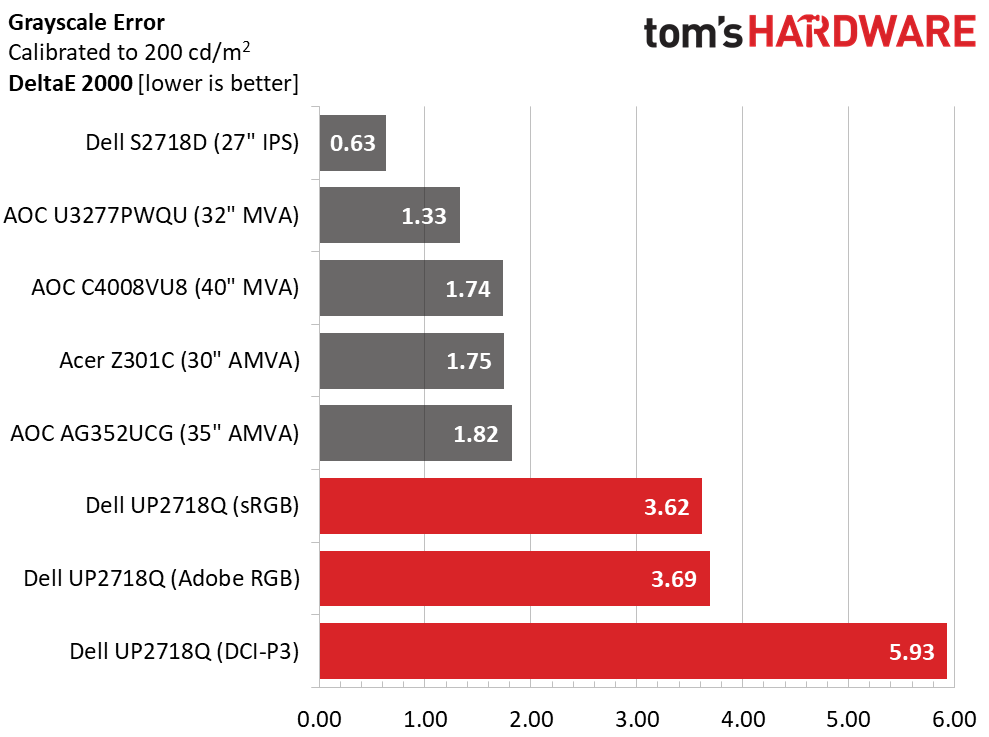Dell UP2718Q Ultra HD HDR Professional Monitor Review
Why you can trust Tom's Hardware
Grayscale, Gamma & Color
We chose the UP2718Q’s sRGB, DCI-P3, and Adobe RGB modes for our tests. They are the gamuts most commonly used in content production for video, gaming, and photography. As we’ve already mentioned, there are two auto-cal memories available for use with included software. This will let you achieve two perfect presets. Our only complaint is that there aren’t more memories. We’d want at least three to accommodate Rec.709, DCI-P3, and Adobe RGB.
Grayscale Tracking
Our grayscale and gamma tests are described in detail here.
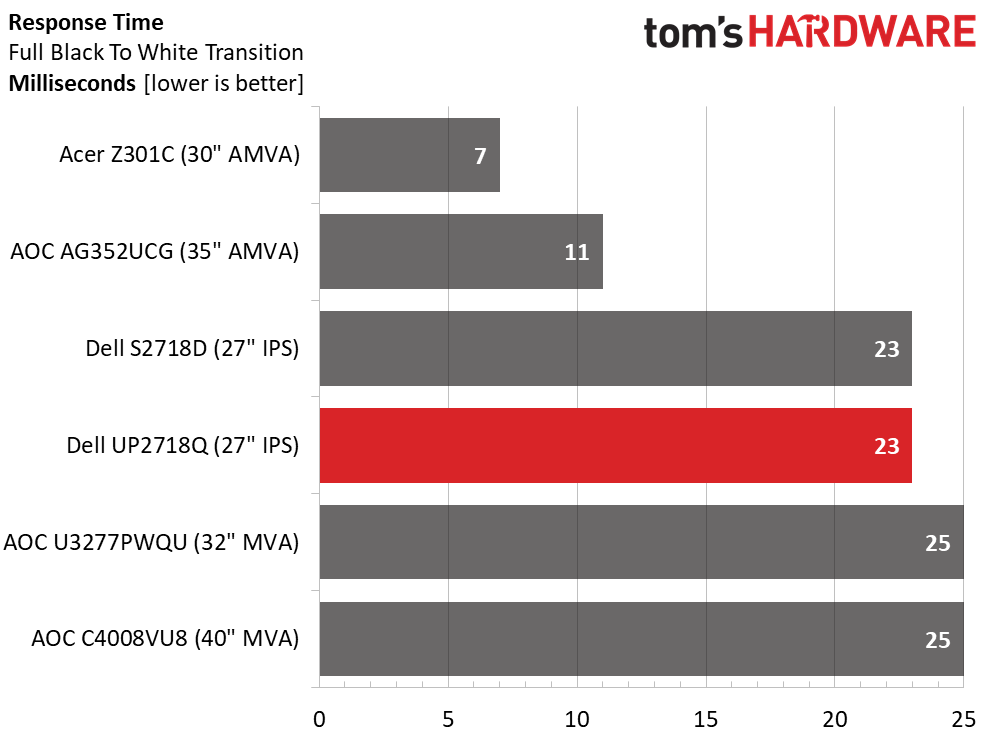
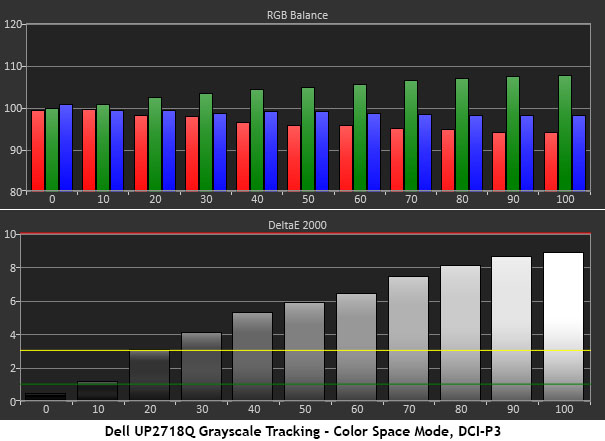
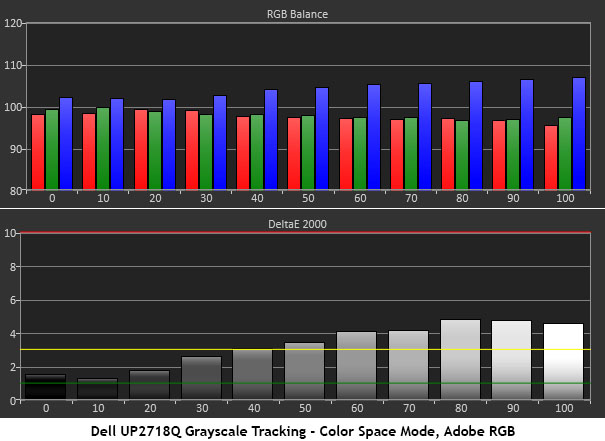
None of the presets are without visible errors. sRGB and Adobe RGB are nearly identical with slight blue issues starting around 40-50% brightness. The DCI-P3 mode has a more obvious green tint. This may not be a problem however. Different versions of the DCI spec vary in their grayscale requirements. When mastering for a commercial cinema, the color temperature should be 6300K, though Ultra HD Blu-ray requires 6500K. To accommodate both, we suggest using the auto-cal software to create a second DCI preset that more closely meets D65.
Comparisons
We couldn’t quite match Dell’s results in our grayscale tests. The included data sheet shows measurements below 2dE when compared to Delta E 94, which is less stringent than our Delta E 2000 standard. And it does not specify which gray levels are measured, only that eight readings are taken. This is a small difference, and we still rate the UP2718Q’s performance as satisfactory.
Gamma Response
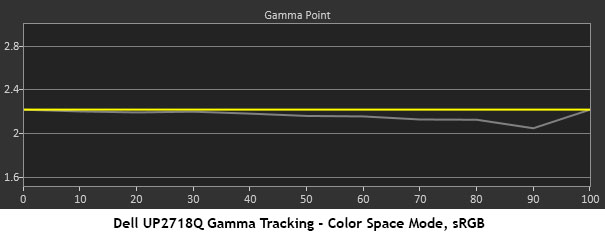
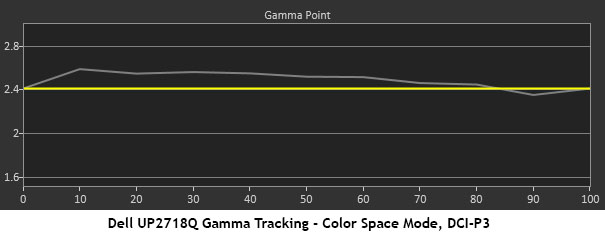
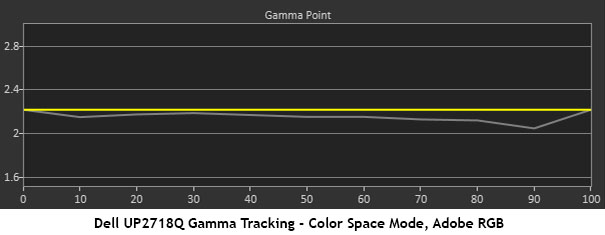
Gamma is not adjustable in the Custom Color mode, but you can alter it during the auto-cal procedure. In the presets, we needed a bit of trial and error to determine what standard Dell is going for. In sRGB and Adobe RGB, the reference is clearly 2.2 power function. The UP2718Q meets the trace almost perfectly with just a slight variation at 90%. To the naked eye, there is no visible error.
Several gamma values are included in the DCI specification. The closest match here is to the 2.4 power function. We tried BT.1886 but found it too far off the mark. We also noted that in Rec.709 mode (not shown here), the reference is also 2.2 power function.
Comparisons
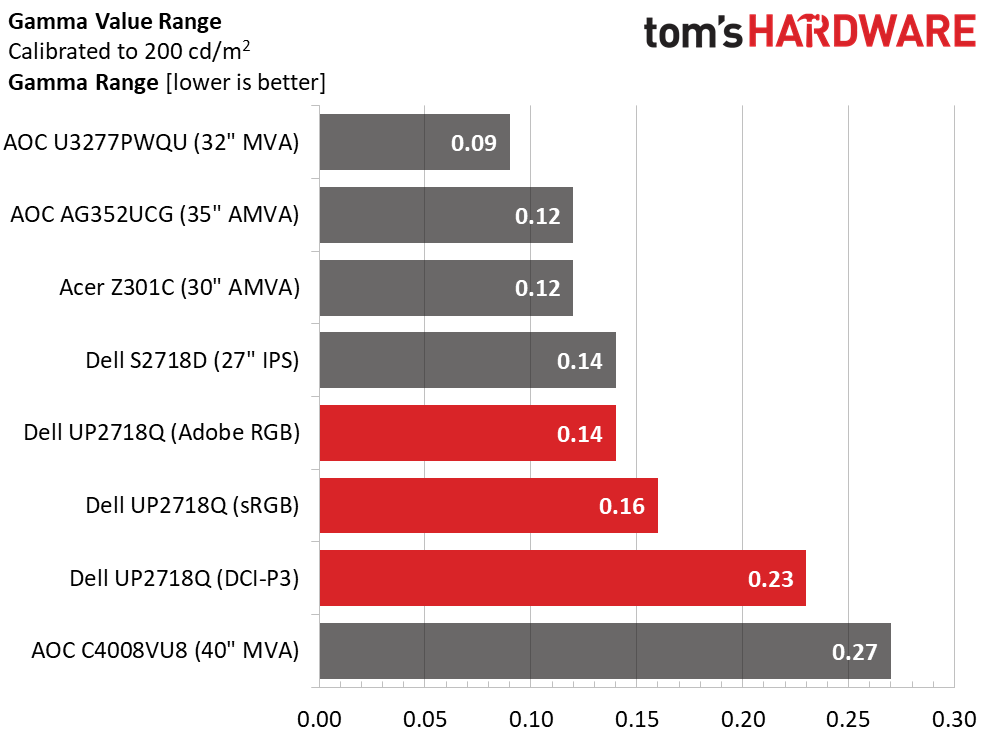
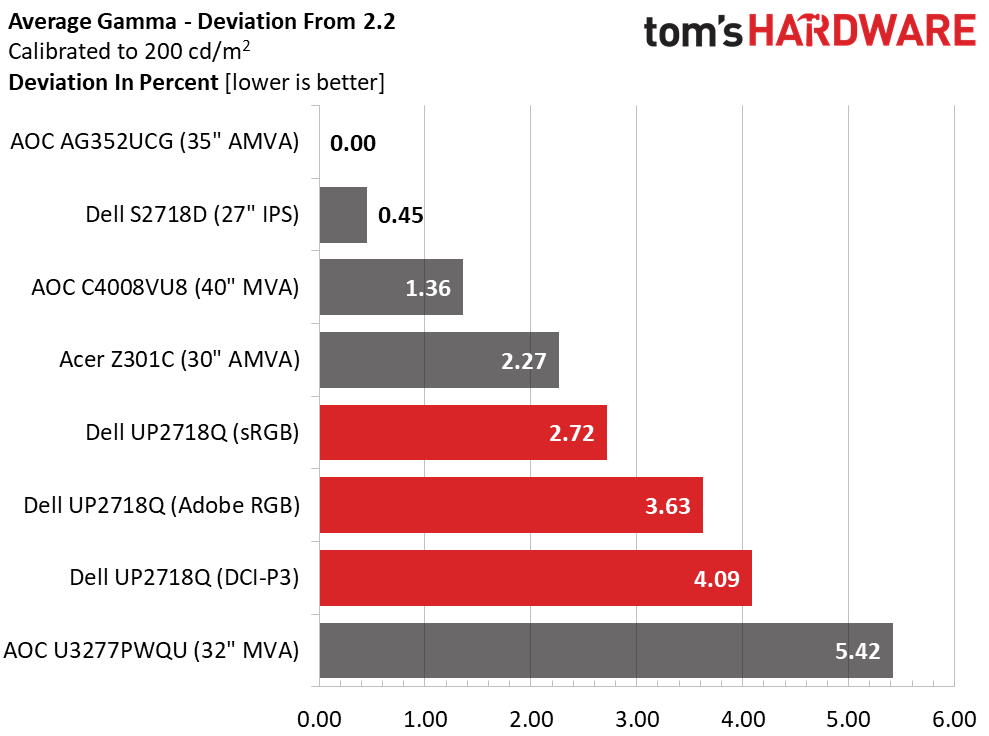
All the displays in the group have tight gamma tracking, so the UP2718Q’s mid-pack finish is not a problem. This level of precision results in much better color quality throughout the saturation and luminance range. In the average value chart, we compared DCI-P3 to a reference value of 2.4 as shown in the measurement traces. In all cases, Dell is showing good performance.
Get Tom's Hardware's best news and in-depth reviews, straight to your inbox.
Color Gamut & Luminance
For details on our color gamut testing and volume calculations, please click here.
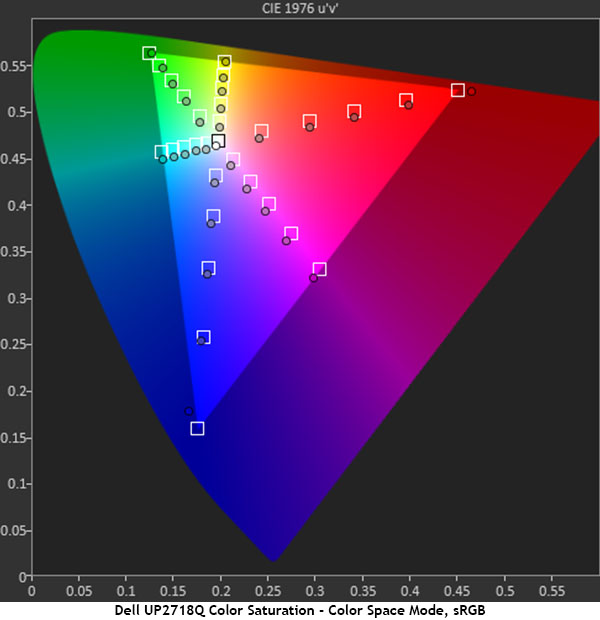
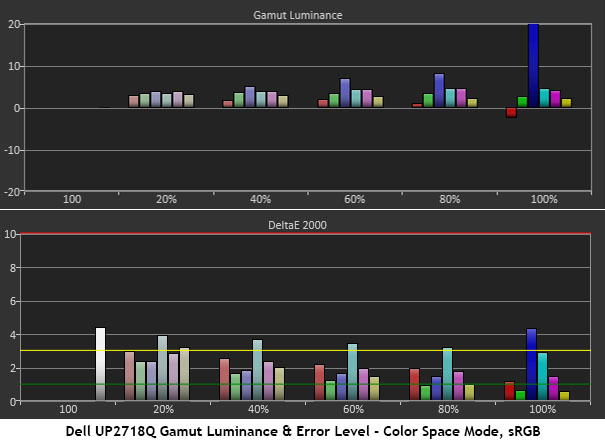
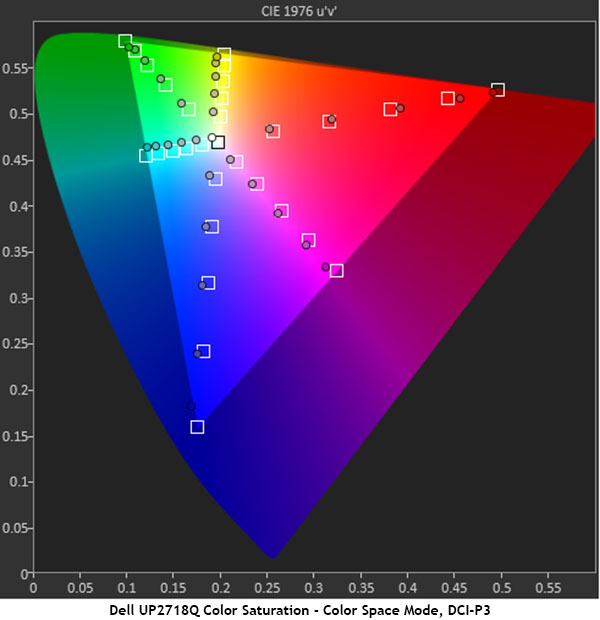
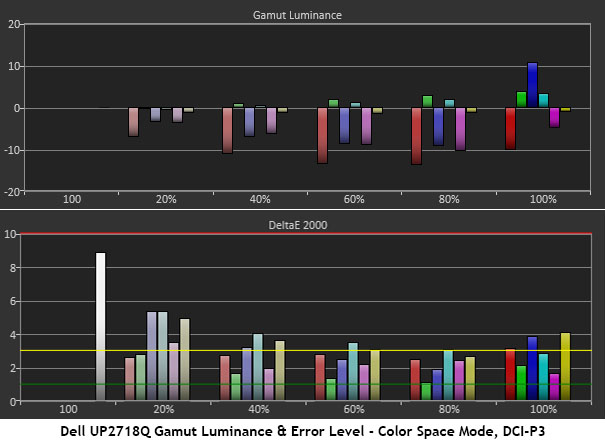
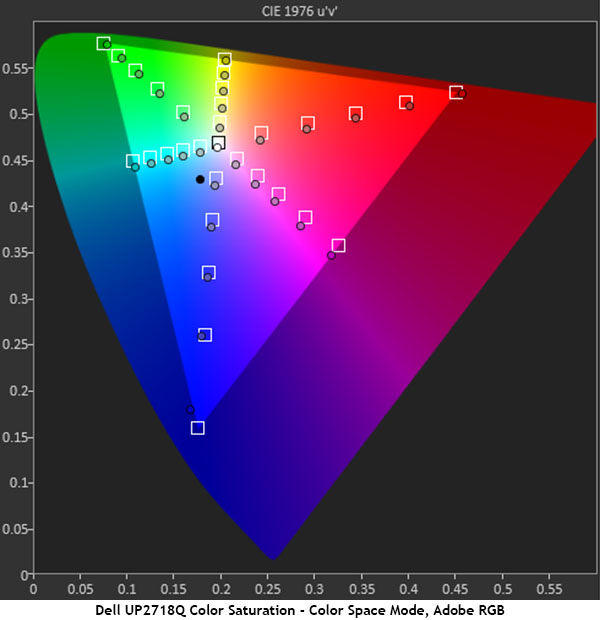
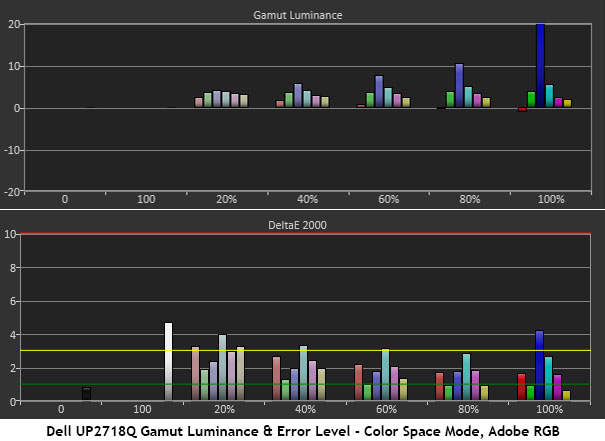
The UP2718Q offers exemplary performance in all its color gamut modes. sRGB and Adobe RGB measure particularly well with almost no visible errors and average values below 3dE. There are tiny hue errors in cyan and magenta, but all points are in contact with the target square, and luminance levels are very close to the neutral level. DCI-P3 mode extends the hue aberration to yellow and is slightly off in its red saturation tracking. Its only visible issues are near the 20% level, but unless you’re looking for the problem, you won’t see it. In all three cases, this is excellent performance.
Comparisons

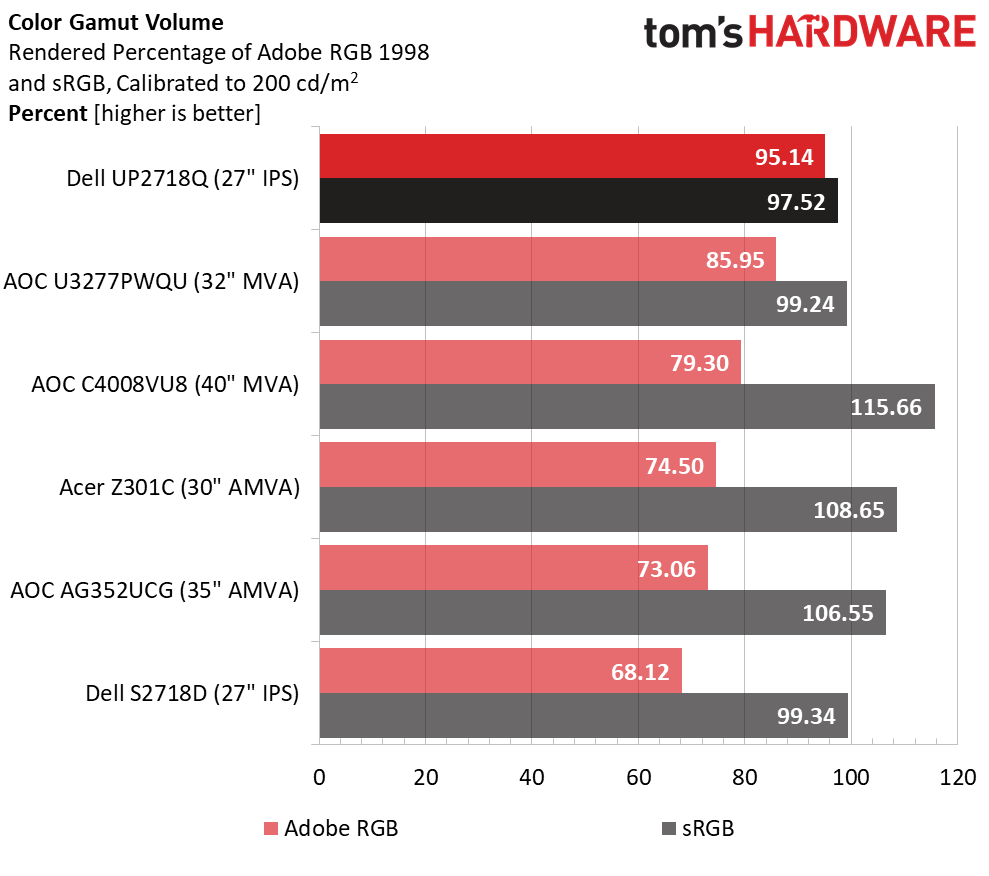
sRGB and Adobe RGB have no issues worthy of concern, and DCI-P3 is close behind that mark. One could improve upon these scores with the calibration software, but as we’ve already pointed out, there are only two memories available. Most users will be satisfied to simply use the UP2718Q in its Color Space mode and select the gamut appropriate for the task at hand. Few monitors offer this many choices, and fewer still sport such consistent accuracy.
In the gamut volume chart, we’re covering just sRGB and Adobe RGB. The UP2718Q comes close to 100% in both instances but is a tad short on blue. In DCI-P3 mode, we calculated a volume of 88.35% thanks to slight deficiencies in the blue and green primaries.
MORE: Best Gaming Monitors
MORE: Best Professional Monitors
MORE: How We Test Monitors
MORE: How To Choose A Monitor
MORE: All Monitor Content
Current page: Grayscale, Gamma & Color
Prev Page Brightness & Contrast Next Page HDR Tests & Hands-on
Christian Eberle is a Contributing Editor for Tom's Hardware US. He's a veteran reviewer of A/V equipment, specializing in monitors. Christian began his obsession with tech when he built his first PC in 1991, a 286 running DOS 3.0 at a blazing 12MHz. In 2006, he undertook training from the Imaging Science Foundation in video calibration and testing and thus started a passion for precise imaging that persists to this day. He is also a professional musician with a degree from the New England Conservatory as a classical bassoonist which he used to good effect as a performer with the West Point Army Band from 1987 to 2013. He enjoys watching movies and listening to high-end audio in his custom-built home theater and can be seen riding trails near his home on a race-ready ICE VTX recumbent trike. Christian enjoys the endless summer in Florida where he lives with his wife and Chihuahua and plays with orchestras around the state.
-
idontrememberit About the anti-glare, can you confirm if the graininess is visible on black text with white background?Reply -
gmayol Do you think this features imply the same increment in the total bill of materials than in price or engineering expenses ? should we see this technology on cheaper models ?Reply -
samer.forums $1500 is too much for this. its 27 inch only .. there are 43-55 inch TVs at the same price with the same specs , 10bit , HDR10 and wide color gamut.Reply -
hannibal The point is They have not the same nits as this device!Reply
If you read there Are Many monitors that claim hdr but can not actually show it. Same with cheap tv sets. -
samer.forums Reply20321789 said:The point is They have not the same nits as this device!
If you read there Are Many monitors that claim hdr but can not actually show it. Same with cheap tv sets.
Latest Sony TVs are VERY BRIGHT .. check them out the 2017 models. -
TheDane HDR is not about nits only. OLED TVs are superior to even the best LCD HDR TVs even though they currently max out at aroung 700 nits. I'd rather have a 500 nits "only" OLED TV than a 500 zone +1000 nits LCD TV. The per-pixel black level are important for maximum detail.Reply -
trevor_dennis Nice, but I'll never trust a Dell monitor again. My admittedly aging 2709W has had the very common vertical line issue for a few years now, and Google tells me I am far from alone. Checking the user reviews on Amazon shows an appallingly low satisfaction with new Dell screens indicating a roughly one in five chance of getting a lemon, and huge problems getting it fixed if you do. You end up with a refurbished screen (second hand) which may or may not develop the same issue. If you get a good one, they are great value, but I am just not prepared to risk it.Reply -
jn77 I have 3 Dell UltraSharp 2408WFP's and they were premium monitors at the time and 1 month after the warranty expired I got the vertical line issue on all of them. I am also done with Dell Monitor's also.Reply -
samer.forums Reply20323968 said:You lost me at 16:9 :(
True .. 16:10 is better for professional work
